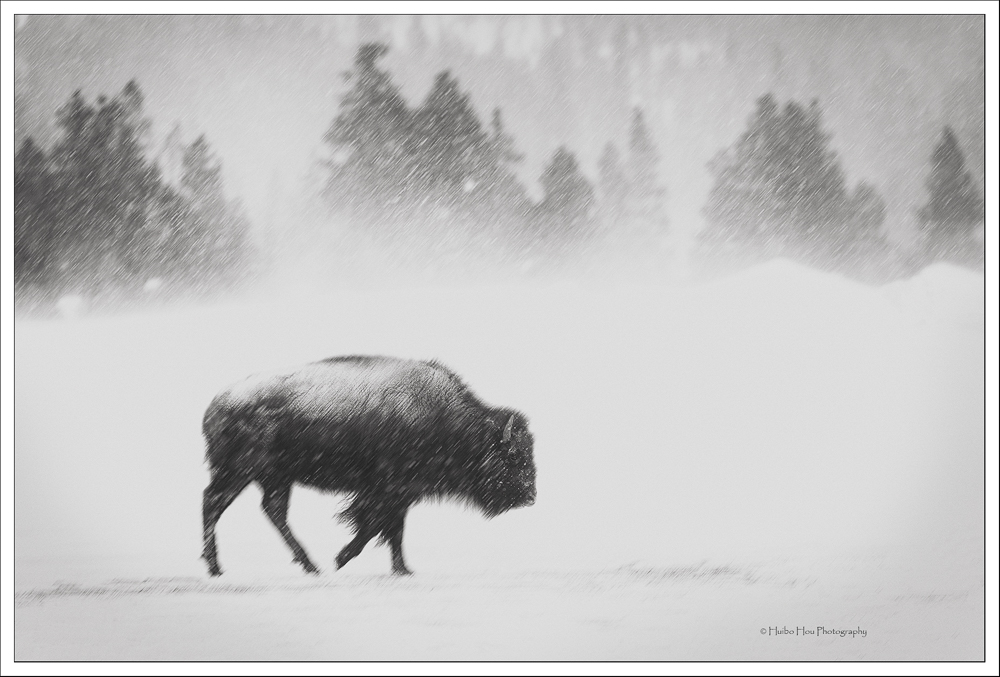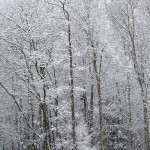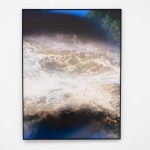Xuan-Hui Ng In Conversation with Huibo Hou
Huibo Hou is a landscape photographer based in San Diego, California. She fell in love with photography about 25 years ago as a hobbyist while working in the wireless communication industry. Then life got in the way and she had to set aside her pursuit of photography for some time. In early 2015, her love of photography was rekindled and she gradually became more serious about the craft.
Landscape photography, especially in black and white (B&W), is the artistic medium she is passionate about. It serves as her creative outlet to express how she observes, interprets, and connects with nature.
I became a fan of Huibo Hou’s B&W photography after seeing it in the Elements Landscape Photography magazine and later again in the On Landscape magazine. She uses light skillfully to direct the viewer’s gaze to different parts of the images. She adds dimension and complexity to her images by bringing out the detail in her blacks.
Huibo’s images are compelling and I come away with the feeling that they are meant to be in B&W. I believe her success lies in the fact she does not convert color images to B&W because they don’t work in color. Instead, she assesses the potential of the scene in B&W before she makes the image.
As Huibo has already been featured in many articles, I wanted to ask her to go into greater depth in some of her answers. I also, admittedly, have personal motivations. I’ve been experiencing a creative lull and wanted to ask one of my favorite photographers for advice! And the challenge she described in her answer to Q11 is the same problem haunting me!
To learn more about Huibo, please visit her website and Instagram page. To view her presentation on B&W photography, check out Nic Stover’s website on “Nature Photography Classes.”
Also, keep a lookout for her upcoming article in the special B&W issue in the Elements Landscape Photography Magazine.
Instagram: @huibohouphoto
You spoke about how black and white (B&W) photography used to be an afterthought and that you used to convert color images to B&W when they didn’t work in color. However, you learnt the importance of previsualization from a workshop with Guy Tal and Michael E. Could you elaborate on this and tell us why it is important?
I learnt from Guy Tal and Michael E.Gordon that the creative process of B&W photography starts with previsualization while working in the field. In my experience, certain landscape characteristics such as form, mood, and simplicity just feel right for B&W work. They usually spark a heightened level of awareness of a promising B&W opportunity. Then with the previsualized image in mind, I proceed with careful observation and contemplation, which helps to improve composition not only from the perspective of physical placement, but also tonal relationship. Compared with how I used to do it as an afterthought, when I converted to B&W only when the color version didn’t work out, I find the previsualization exercise gives me a better starting point for post-processing, and yields much more consistent results overall.
Can you tell us what inspiration you draw from each of the photographers, for example, Guy Tal, Alex Noriega, Bruce Percy and Brooks Jensen?
Guy Tal has been a source of inspiration for me for many years. I discovered his work during my six-year hiatus from photography and it played an important role in reigniting my passion for the art. His approach has influenced my workflow from previsualization to post-processing, while his philosophy and writing have helped shape my general approach to photography.
I subscribed to the print version of Lenswork magazine in 2007 and it has stimulated my passion for B&W photography ever since. I thoroughly enjoy listening to Brooks Jensen, the magazine’s editor, on his weekly and daily podcasts because they are filled with wisdom. As with Guy Tal, Brooks Jensen’s philosophical approach to photography has shaped my own approach to the art.
I always draw inspiration from Alex Noriega’s exceptionally refined work. His personal perspective, observation skills, creative composition, and seamless post-processing techniques are evident in each of his images. Seeing his work inspires me to become better at my craft.
During the pandemic, I discovered Bruce Percy’s work, and was immediately drawn to his minimalist style. His work resonated with me deeply, probably due to the timing – because I was in the midst of shifting towards simplicity at that time. His way of seeing and his simplification of complex scenes have had a profound impact on my latest work.
You quoted Bruce Percy on selecting location. Could you tell us which locations have worked for you, and why? Which have not, and why not?
I really like what Bruce Percy says about selecting location. He said, ‘The landscapes you work with are very vital, in terms of your own development. I’ve found certain landscapes can be great teachers. If you meet the right one at the right time of your journey, it will work with you. However, if you work with the wrong landscapes, they will often work against you.’ I guess what I am saying is that I also became a bit selective about where I want to do serious photography instead of just enjoying going to new places.
Landscapes that possess opportunities for creativity and challenge deeply resonate with me. Yellowstone in winter is a perfect example. During the two trips to Yellowstone in the winter of 2017 and 2018, I developed a deep appreciation of simplicity.
To train my eyes, I like to start with a relatively simple place and work my way up to more complex and challenging landscapes. I love working with pristine landscapes such as snowy winter scenes, but if I always do that, I don’t learn how to approach complex landscapes. Conversely, if I start with very complex landscapes such as woodlands, I may feel overwhelmed and defeated. So, at this juncture, the best landscape to train my vision is somewhere in between.
Several places, aside from Yellowstone, have worked for me in this regard. Death Valley National Park is another location that beckons me to return repeatedly due to its proximity to my home.
You don’t do multiple exposures or use intentional camera movement (ICM). Is that something you would like to experiment with, or does it not interest you?
Although ICM isn’t my main interest, I experiment with it in my color work from time to time. I experience a lot of hits and misses but occasionally it surprises me by elevating a familiar or mundane scene to a different level. ICM is one of the techniques I turn to when I need a creative boost.
Multiple exposures, on the other hand, I rarely do because I think it is quite hard. It involves different techniques ranging from stacking multiple images of the same (or similar) scene for a dreamy effect to the more intricate process of selecting and layering images creatively and harmoniously to tell a story that a single image alone cannot achieve. To me, the concept behind multiple exposure holds greater significance than pure aesthetics. Although multiple exposure is not my favorite tool for achieving creative results, I enjoy seeing others’ work and remain open to experimenting with it.
Would you like to have more time to photograph or are you satisfied with your current pace?
I would certainly like to have more time! Due to family commitments, frequent or extensive travel isn’t feasible for me now. My time for editing photos or reading about photography is also quite fragmented. However, not being able to travel frequently has its perks. It gives me time to go through my photos and finish editing before the next trip. Therefore, even if I had more time to photograph, I would like to maintain a balance between photographing and post-processing work.
You mentioned wanting to express emotion and connection with nature. Could you describe some of the emotions you want to express? What story are you trying to tell with your images?
A sense of wonder, mystery, solitude, calm, quietness are among the emotions that I feel in connection with nature and want my images to convey.
What other subjects or landscapes would you like to photograph?
Eventually I want to photograph people. But I am an introvert – I chose landscape because I don’t need to interact with people. Perhaps, over time, I will step out of my shell. For now, I am content with photographing only landscape.
How do you find titles for your images?
I’m not good at that at all! Finding the right title is always a challenge. I aim for titles that are concise. If I can share any tips for titling my images, it is to reflect on my feelings about the scene or dig deep into what I want this image to convey. If I can articulate an answer in sentences to these two questions, I then look for a way to condense the sentences into a few words to form the title.
Do you consult people on your photographs?
Yes and no. From time to time, I seek input from a few of my local photographer friends. I always find this very helpful. However, I’m mindful not to let their perspective distract or guide my vision. It is a balancing act.
How do you think one can evolve as an artist?
By staying true to yourself and pushing yourself out of your comfort zone; also being driven by a desire to improve. I wrote an article to NPN to explain this. If there is one principle in photography, I believe it’s staying true to yourself. Be yourself, proceed at your own pace, focus on photographing something that interests you, and develop a personal style that reflects who you are. This will help you evolve as an artist, even if it takes longer.
Moreover, it is not good to keep producing similar work. So pushing yourself out of your comfort zone to explore new things is a great way to grow – as long as your motivation stems from a genuine interest rather than external pressure to conform or to be more successful. When I feel stuck, I find immersing myself in a workshop conducted by someone I admire or visiting places I feel deeply connected with usually helps to boost my creativity.
What challenges have you faced in photography?
Letting go of the expectation that my next image must be better than my last one. Anticipating continuous success is a source of anxiety and stress. I’ve learnt the importance of relinquishing expectations on the outcome and redirecting my focus towards the process. However, it is easier said than done. I still find myself wrestling with my expectations from time to time and need constant self-reminders.
What are your aspirations for your photographs?
I aim to become a better storyteller, even in the realm of landscape. I would like to become more fluent in multi-image series, rather than single images. I’d like to get my first book published. With AI now being an unavoidable part of photography, I’d like to return to the roots of the craft, that is, relying on my observation and composition skills to make impactful images. After all, as Elliott Erwitt said, “Photography is an art of observation. It’s about finding something interesting in an ordinary place. I’ve found it has little to do with the things you see and everything to do with the way you see them.”
Thank you to Xuan-Hui Ng
Follow on instagram: @xuanhui_ng
Posts on Lenscratch may not be reproduced without the permission of the Lenscratch staff and the photographer.
Recommended
-
Time Travelers: Photographs from the Gayle Greenhill Collection at MOMADecember 28th, 2025
-
Marcia Molnar: The Silence of WinterDecember 24th, 2025
-
Paccarik Orue: El MuquiDecember 9th, 2025
-
Jackie Mulder: Thought TrailsNovember 18th, 2025
-
Interview with Maja Daniels: Gertrud, Natural Phenomena, and Alternative TimelinesNovember 16th, 2025




































































